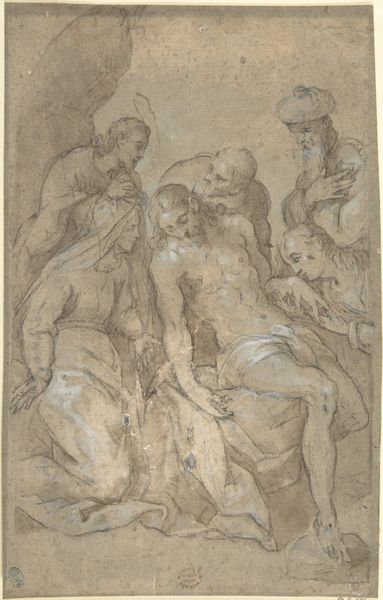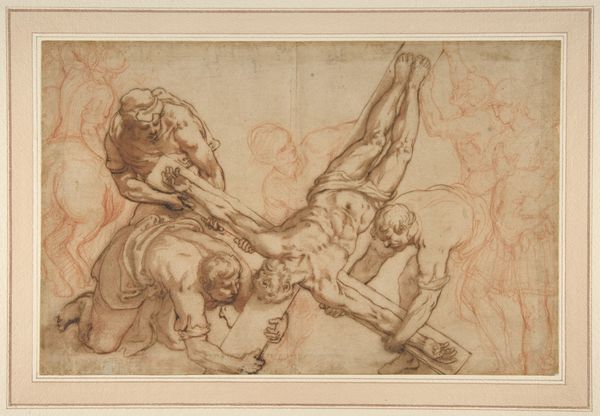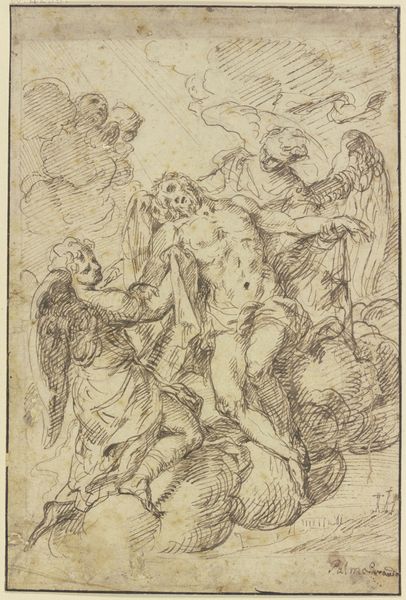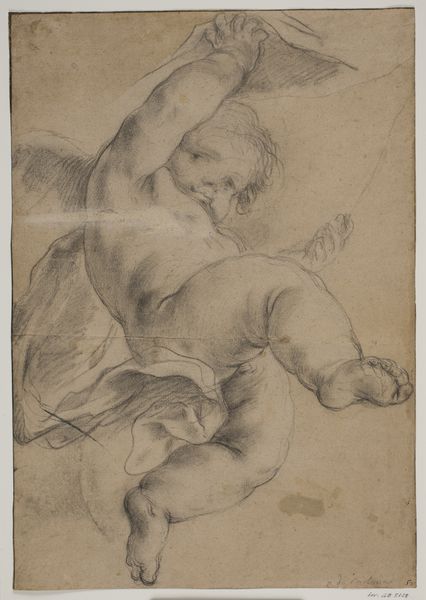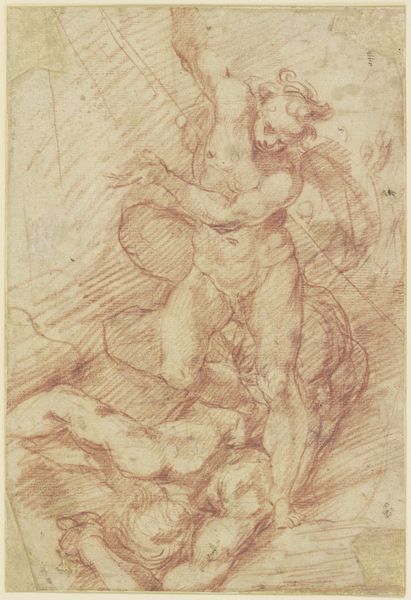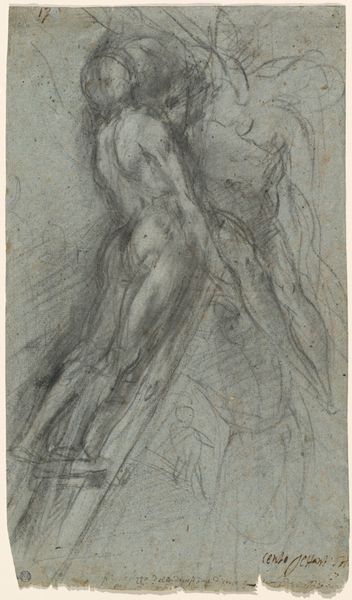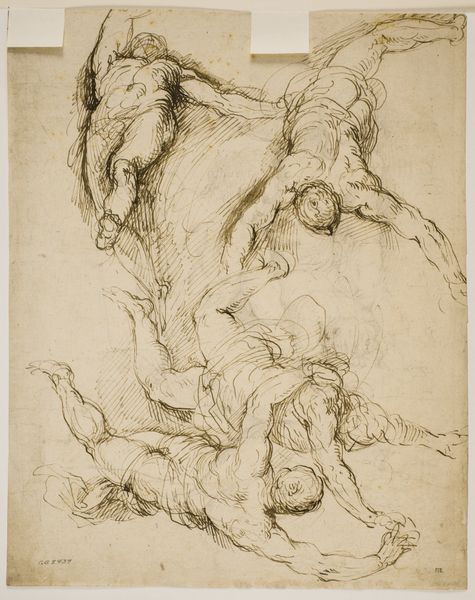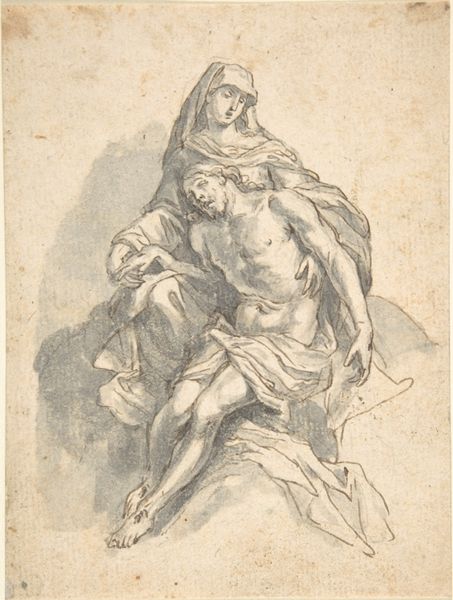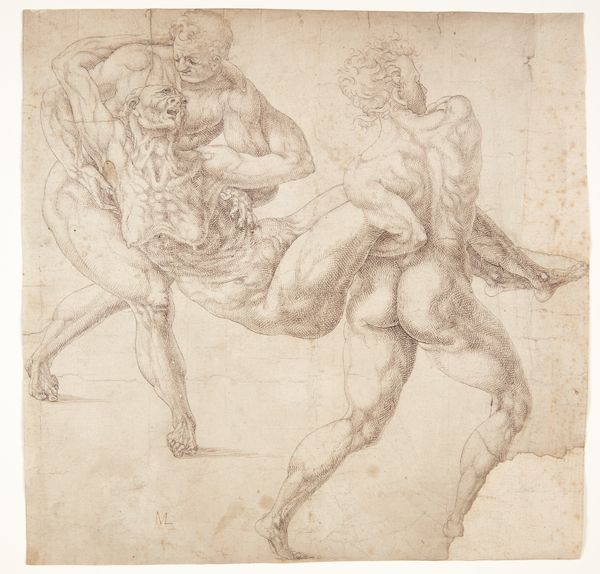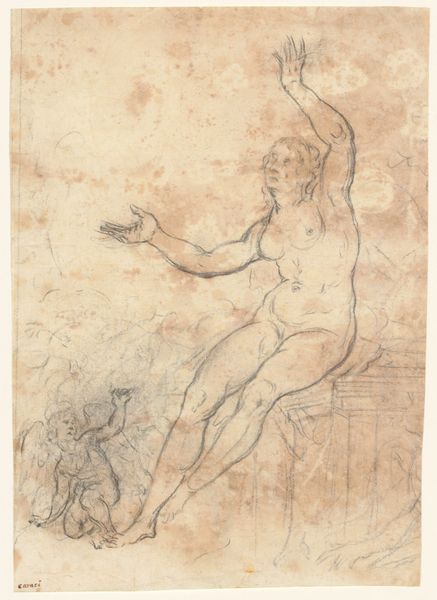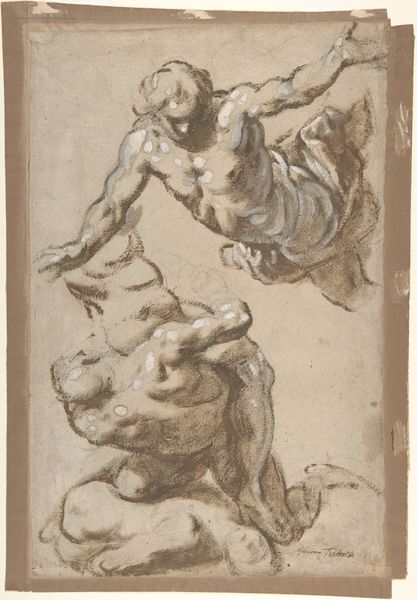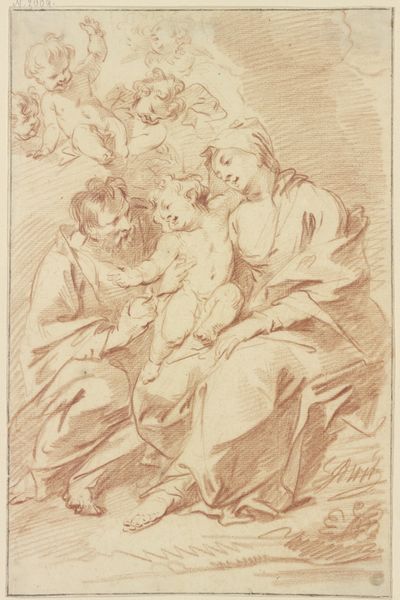
The Dead Christ Supported by Three Figures 1537 - 1591
0:00
0:00
drawing, print, paper, pencil, charcoal
#
portrait
#
drawing
# print
#
pencil sketch
#
human-figures
#
charcoal drawing
#
figuration
#
paper
#
11_renaissance
#
pencil
#
charcoal
#
history-painting
#
italian-renaissance
#
christ
Dimensions: 12 3/4 x 9 1/8in. (32.4 x 23.1cm)
Copyright: Public Domain
Curator: Before us hangs "The Dead Christ Supported by Three Figures" by Giovanni Battista Naldini, crafted sometime between 1537 and 1591. It's currently held in the collection of the Metropolitan Museum of Art. Editor: It strikes me as deeply somber. The swirling lines and muted tones, perhaps charcoal and pencil on paper, create a mood of profound grief. It’s as though we're witnessing a moment of raw sorrow, capturing figures reeling in communal loss. Curator: Indeed. The medium itself--the humble charcoal and pencil on paper--speak to the working methods in sixteenth-century workshops. Drawings like this allowed artists to explore and refine compositions, negotiate collaborative efforts, and efficiently render scenes for prospective clients, enabling the quick reproduction of preparatory sketches within Naldini’s social network. Editor: It speaks volumes about access, doesn’t it? These materials, cheaper than oils or frescoes, would have made art accessible to a wider audience—even as the themes were steeped in the visual rhetoric of its time. It also emphasizes, in some way, the human labor involved in the distribution and reinterpretation of biblical figures. The materiality facilitates the message, amplifying themes of sacrifice, power, and vulnerability. Curator: Consider also the interplay between the graphic impact of a chalk ground combined with the delicate pencil. The blend offers a balance between spontaneous impression and meticulously calculated design. How Naldini combined them to establish light and shadow really exemplifies a trend of quick, but persuasive renderings being made during the renaissance. Editor: It’s fascinating to view it through a lens of collaborative artistic labor. Looking at these figures, who labors and who grieves? This echoes our contemporary grappling with collective mourning and how different groups share and perform grief publicly. We’re all implicated. Curator: What truly strikes me is how drawings allow for immediate dissemination of iconographies to be spread by more workshops through lower barriers of expense to participate in drawing than in oil. It is easier to mimic sketches and modify the themes being proposed by great masters. Editor: Yes, what we are seeing here is how religious subjects entered the realm of production to have a global audience—something quite progressive, I think, given the context. Thank you, I certainly leave here considering how devotional themes and modes were communicated within society. Curator: The materiality underscores the labor of its production for various social echelons. The blending of utility, function and devotion gives me much to reflect upon regarding Naldini’s craft.
Comments
No comments
Be the first to comment and join the conversation on the ultimate creative platform.
